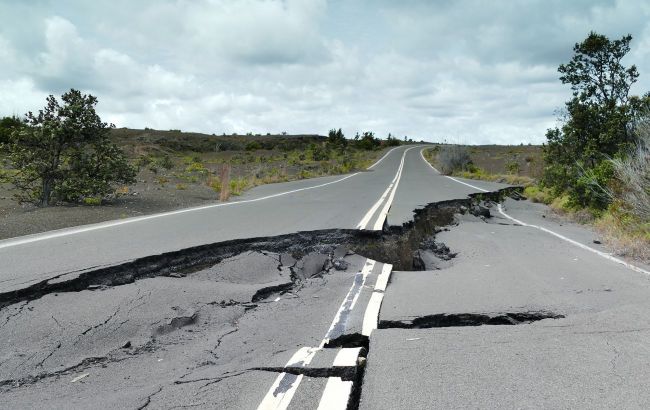Could bombings spark earthquakes in Ukraine? Here's what science says
 Do explosions trigger earthquakes? (photo: Getty Images)
Do explosions trigger earthquakes? (photo: Getty Images)
In nearly three and a half years of full-scale war, Russia has launched hundreds of missile attacks on Ukraine. Practically every day, tons of TNT explode on our territory, creating a destructive shock wave similar to a seismic one. In an interview, we asked Dmytro Hryn, Doctor of Physical and Mathematical Sciences, leading researcher at the Subbotin Institute of Geophysics of the National Academy of Sciences of Ukraine, whether explosions can trigger earthquakes.
Can explosions provoke earthquakes?
In Ukraine, more and more earthquakes have been recorded in recent years. Last year there were 9, and about a dozen already this year. The latest occurred on July 13 in the Chernivtsi region, with a magnitude of 2.6.
"Across Europe as a whole, there were more earthquakes in 2023-24 than in 2022. Observations showed that in 2025, there would be fewer of them. That is, there's a wave-like unloading, which triggers sometimes more, sometimes fewer earthquakes. Accordingly, there is no increase," added Hryn.
He emphasized that scientists do not see a direct connection between explosions and earthquakes.
"Geological objects are, first and foremost, structures with enormous mass extending to great depth. Therefore, even systematic explosions of thousands of tons of explosives release too little energy for such a large mass to shift," the expert explained.
The increase in the number of recorded earthquakes in Ukraine can also be explained by the fact that scientists now have better equipment to detect them.
"Earlier, small earthquakes were missed because we didn't have equipment that could clearly detect them and allow us to determine earthquake intensity and coordinates," the seismologist said.
Unnoticeable but dangerous consequences of explosions
According to Hryn, an explosion of 450-800 kg of TNT creates shock seismic waves that affect buildings within a 250-meter radius in the same way as an earthquake of 6-8 magnitude. At the same time, typical Soviet-era buildings are designed for 5 magnitude, and modern ones are for 6-7.
Hryn emphasizes that buildings are currently practically exposed to "local earthquakes" due to explosions. And this can cause overloading.
"Destructive processes are happening, but we don't see them immediately. That is, the building is intact, it stands, but 25 years have already been subtracted from its original service life because of destructive wave impact," the scientist adds.
A particular danger comes from the accumulation effect. A series of weaker earthquakes or explosions leads to structural fatigue. As a result, this can end with the appearance of a critical crack or even the collapse of a building.
Also read about how on February 1, residents of Poltava reported noticeable tremors on the upper floors of buildings on social media. The Main Center for Special Monitoring confirmed that an earthquake with a magnitude of 3.67 occurred near Poltava.

